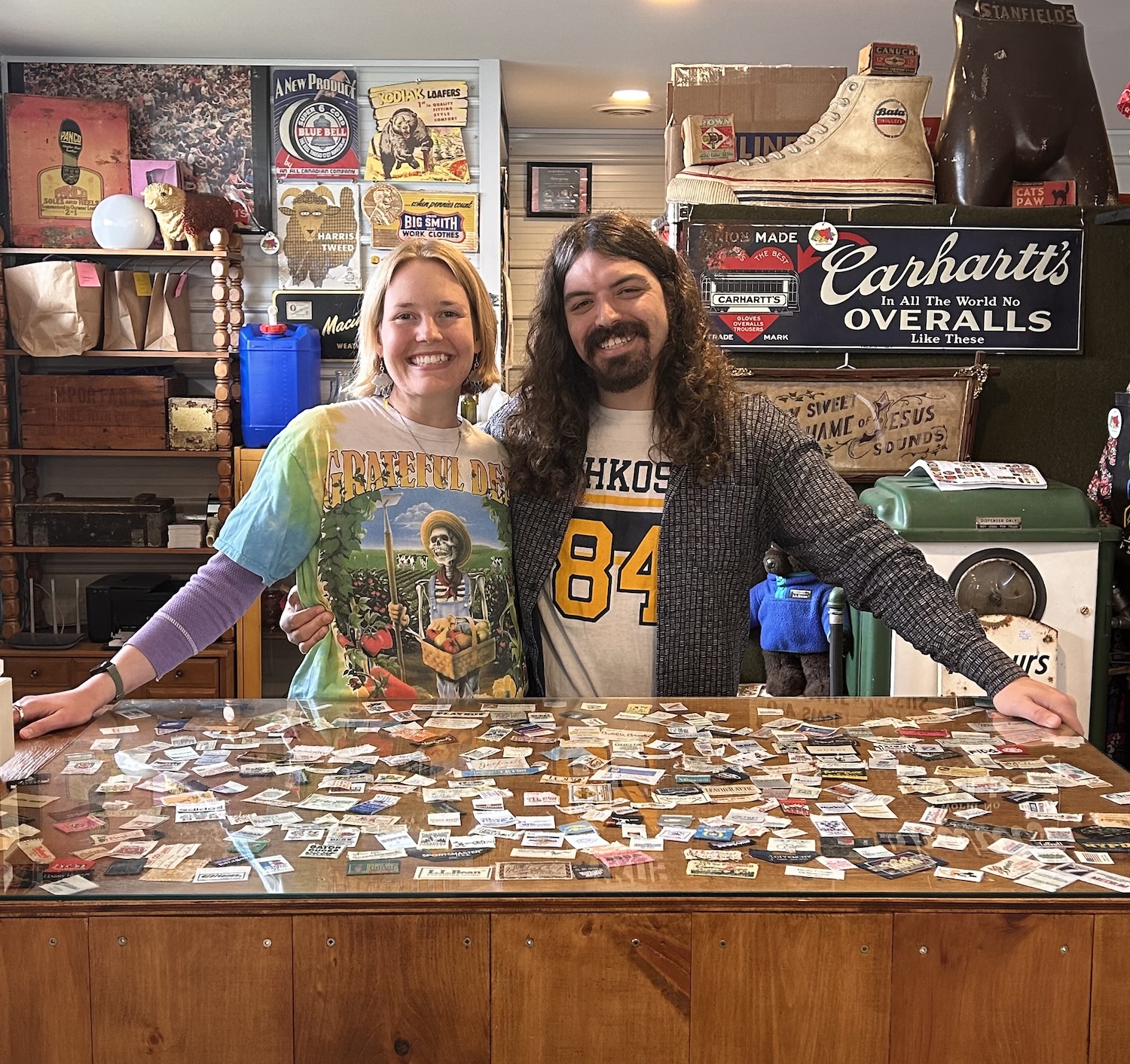
Symbolic love: What you need to know about the Grand Period of Victorian jewellery
Can't get enough of "romancecore" jewels? In the second part of our series on Victorian jewellery, learn about how to identify pieces from the Grand Period
This article contains affiliate links. We independently research products. We may earn a small commission if you make a purchase through the links, at no extra cost to you, which helps to fund our website operations. Affiliate links do not inform the direction of our editorial content. Read more in our Terms & Conditions.
In part two of our three-part series on Victorian jewellery, we’ll explore the bittersweet memorial jewellery worn in the Grand Period (1860-1885). We’ll also look at trends in England and internationally that influenced motifs and materials used in fine and costume jewellery. If you missed it, here's part one covering the Romantic Period (1837-1860) of Victorian jewellery.
A brief history of Victorian jewellery from the Grand Period
Once Victorians realized their romantic ideals, it was impossible to live without the notions of true love. Sadly, Queen Victoria lost her beloved Prince Albert with his untimely death in 1861.
That’s why Victorian jewellery from the Grand Period is synonymous with mourning jewellery.
Victorian mourning jewellery is a symbolic token of a lost loved one, and was popular because epidemics, pandemics, and wars took many lives during the Victorian era.

Grand Period jewellery took on a romanticized and nostalgic tone when in memory of a spouse. As a memorial, mourning jewellery was often inscribed with the departed’s initials, name, birthday and date of death.
As a widow, Queen Victoria wore only black for the rest of her life — in contrast to Victorian etiquette, which saw most widows moving away from black after the first two years and into navy, purple or dark grey.
During the Grand Period, the colour of gemstones became more subdued to reflect the sombre mood.
Jewellery motifs in the Grand Period
Motifs symbolizing love and religion were common in jewellery during the Grand Period. Hearts, love knots, cherubs, angels, heavenly clouds, stars and crescent moons were often combined in pieces.
You’ll also find flowers, especially daisies and forget-me-nots, as well as insect motifs, including flies, spiders, wasps, butterflies, dragonflies and bees. You’ll also discover delightful motifs of birds and animals crafted into jewellery.

Jewellery design also incorporated international influences. The scarab beetle was an symbol of luck in Ancient Egypt. With the building of the Suez Canal in Egypt between 1859 and 1869, this insect became all the rage in Grand Period Victorian jewellery.
Archeological finds led to the revival of designs found in Greek, Etruscan and Roman times. Meanwhile, trade with Japan introduced elements from Japanese art into designs, including motifs of dragons, stylized fans and flowers, which were crafted using traditional Japanese techniques and metal alloys such as shibuichi and shakudo.
Materials used in Grand Period Victorian jewellery
Jet, a coal-black stone, is a quintessential look of Victorian mourning jewellery.
A superior jet called Whitby jet was mined along the Yorkshire coast in Whitby, England and was the only jet Queen Victoria allowed in her court. Comprised of fossilized wood, which had naturally set into the earth’s compressed crust, this black material was cut into various shapes with intricate carvings. French jet was made from faceted black glass.
Vulcanite, also known as ebonite, was crafted to look like Whitby jet for a less exclusive market.
It was initially patented by the Goodyear Tire Company in 1846 from a highly heated mixture of rubber and sulphur. The material allowed jewellery to be produced using moulded, not carved, beads.

Black onyx in Grand Period Victorian jewellery symbolized emotional strength during grieving. White onyx was used to remember the lives of children, teens and yet-to-be-married women.
Pearls were always a dignified choice for jewellery wearers of the time. These precious gemstones signified tears.
Most coloured stones were considered inappropriate in mourning jewellery; however, dark red garnets were acceptable. You'll also find green stones in jewellery from the Grand Period.
France’s Empress Eugenie had a passion for emeralds, and sales soared. Jade from China was also being introduced into the West. Lovely turquoise symbolized both love and remembrance.

Opals were in fashion due to a significant discovery of the gemstone found in Australia. Small diamonds offered decorative, reflective elements against all the darkness. With the discovery of a South African diamond mine in 1867, the precious gem became more accessible to the masses.
Find antique & vintage jewellery at a market near you
View our events calendar
Many pieces of mourning jewellery from this period were made with black enamel, which differs from black onyx in that it's a manmade material.
Black enamel results from heating powdered glass and pigment at high temperatures — a delicate forming process that can elevate the price. Royal blue enamel represented eternal love.
Jewellery trends in the Grand Period
Jewellers would craft tiny pieces of glass in Revival Roman mosaic fashion into their designs. Use of piqué — the art of inlaying gold or silver into tortoiseshell, mother of pearl or ivory to make jewellery — was at an all-time high.
As they did in the Romantic Period, shoppers coveted cameos carved from stone or shell, except in the Grand Period, there were often carved portraits of a lost loved one in mourning jewellery.
While cameos employ a raised design on a flat surface, an intaglio involves engraving by pressing into gemstones or glass on a flat surface.
The technique traces back to ancient Greece and inspired reverse intaglios in the Grand Period. Pictures were engraved on the back of a flat, clear surface and then painted. You find many animal intaglios in this format on your hunt.

Brooches were bold pieces designed to be seen. Often, a round cabochon-cut stone sat in the centre with a decorative border. Other central pieces included cameos, mosaics or portraits.
Beaded necklaces were worn and intricately carved in rounded forms and square- and tear-shaped shapes. Everyone wore lockets. Some were clear-fronted glass to show the hair of a departed loved one. Others held portraits inside or on the back.
Pendants were large during the Grand Period. It was not unlikely to see women wearing a chain with more than one pendant dangling from it.

Gold chain-link bracelets and bangles, thick or thin, were worn in multiples. Buckle motifs were still on trend. As for diamond bracelets, look for diamonds set in pavé style. Tiny stones in almost-invisible prongs created a “paved” look. More affordable bracelets were made with silver with gold overlay.
As for earrings from the Grand Period, you’ll find hoops and drop earrings of various lengths and sizes.
Identifying jewellery from the Grand Period
Just like in the Romantic Period of Victorian jewellery, stones were rose cut, old mine cut or cabochon cut. The later style was polished, not faceted, and always domed on top. You’ll see cabochon stones used as a canvas for designs made with embedded diamonds, pearls and gold.
Gold in both yellow and pink remained the metal of choice during the Grand Period. It was then available in lesser-karat gold, including nine-, 12- and 15-karat gold, and finer 18- to 22-karat gold. Look for stamps to indicate quality. British gold is “carat,” and North American is “karat.”

Gold from other parts of Europe will be marked to indicate the weight or a number representing parts per thousand. In costume jewellery, brass or rolled gold often substituted for the real thing. These were filled with metal to give costume jewellery a sense of weight.
As a side note, white gold was not readily available until 1900. In 1932, 12- and 15-karat gold were replaced by 14-karat gold.
Sterling silver was now more popular. Although Queen Victoria has always worn Scottish silver, it became more accessible to the public when a large vein of silver was hit in Nevada in 1860. Steel was crafted to look like silver in costume jewellery.
Metals were often crafted in mesh designs, and jewellers enjoyed creating embellishments such as foxtail or braided tassels with gold balls at the end. Works were usually completed with intricate scrolls, engravings or stamped with geometric patterns.
Other telltale signs of Victorian jewellery from the Grand Period include kidney wire or threaded stud earrings, and tube hinges, c-clasps and trombone hinges on pins and brooches. The standard for necklaces during this time was pin-and-barrel clasps.
Where to find Grand Period Victorian jewellery
Try Etsy, eBay, Ruby Lane, your local antique jewellery shops or ask a local vintage jewellery seller if they have any pieces.
Enjoy building your Victorian jewellery collection.
Karen Barr is a freelance writer in Ottawa, Ont.
Thank you for valuing our work!
Support our work to see this page.
You’ve got a good eye, but this gem is only available for members. Register for a plan or upgrade your current one to peek behind this vintage curtain, or log in below.















